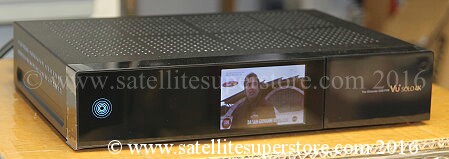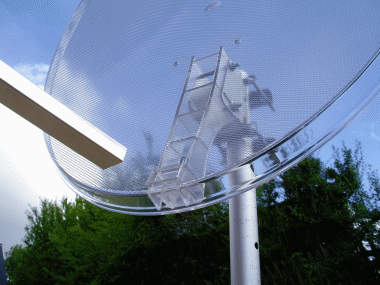Museum of early consumer electronics and 1st achievements
www.rewindmuseum.com
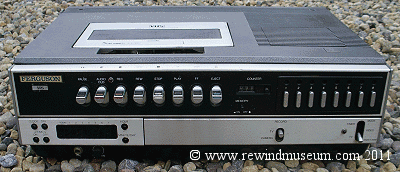
With a domain name of
www.rewindmuseum.com including some of the very first
video cassette recorders means this is a very important page. Hope you find it interesting.
1976. JVC HR-3300. The first ever VHS video cassette recorder.

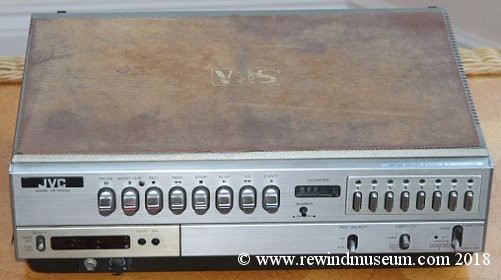
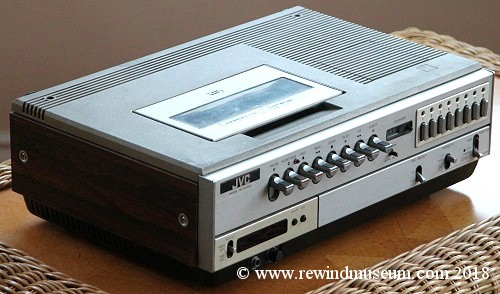
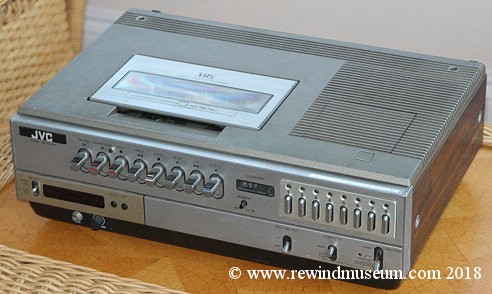
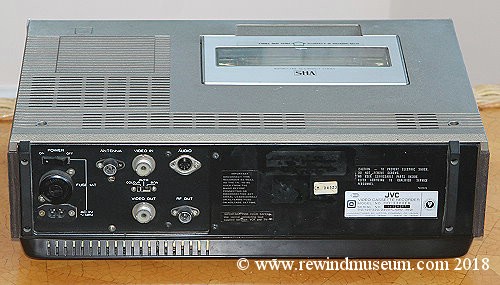
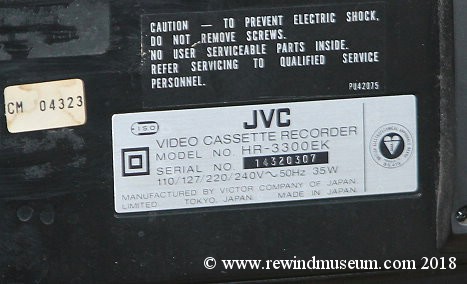
JVC invented the VHS system and this was the first VHS recorder. Manufactured by The Victor Company of Japan
Limited. Tokyo. Japan. This is probably the VHS VCR which everyone remembers and it was made in large quantities.
It was widely available for sale or to rent. In 1976 - 1978 it was, in comparison to other VHS and Betamax models,
a very compact unit which added to it's popularity. This one has an optional VHS fabric cover on the top.
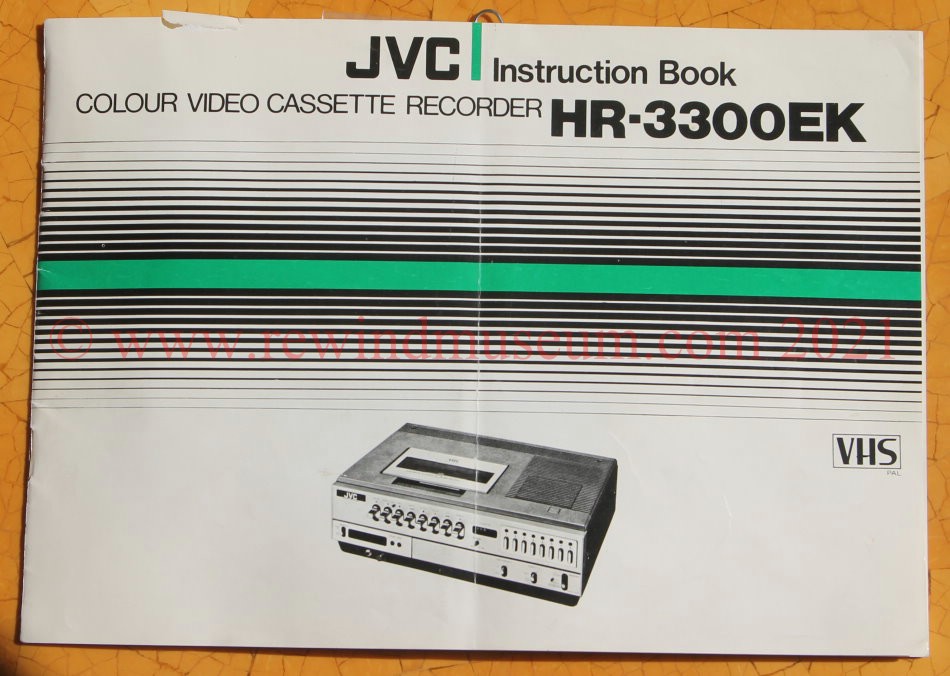
Also in our store of old publications, we have an original manual.

1978. Ferguson Model 8922. (JVC HR-3300 clone sold in the UK)
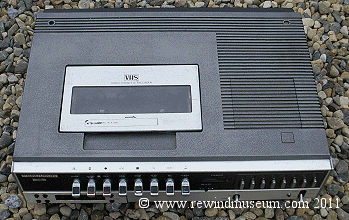
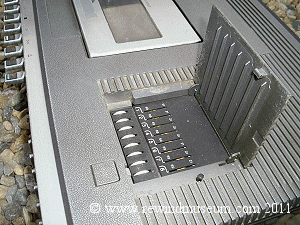
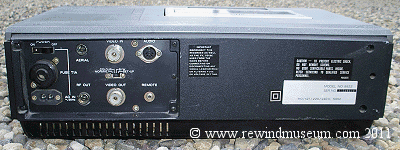
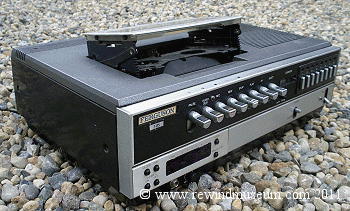

The 1st VHS VCR was introduced by JVC in 1976 (above) and was the JVC HR-3300. This is a Ferguson clone of the JVC HR-3300
(see above). The unit was introduced in the UK in 1978 and was cloned by a number of manufacturers including Baird
(see below). This is also the VHS VCR which everyone remembers in the UK and it was available for rent or sale in large
quantities. It was, in comparison to other VHS and Betamax models at the time, a very compact unit which added to it's
popularity. Some sites refer to a 3V00 but this model has 8922 on the serial plate, exactly the same as the Baird below.
Ferguson was a very well respected brand name in the UK. Ferguson Radio Corporation, which was part of the British
Radio Corporation manufactured televisions throughout the 1950s and 1960s. Indeed my ant had a 1955 Ferguson 236T
17" console TV. In the 1970s I took out the innards as she wanted to use the walnut cabinet (with doors on) as a
blanket box. Ferguson was taken over by Thorn in the late 1950s. In 2017 the only TV manufacturer in the UK,
Cello Electronics in North East England, now has the rights to use the Ferguson brand name on it's TVs.

1978. Baird Model 8922. (JVC HR-3300 clone sold in the UK)
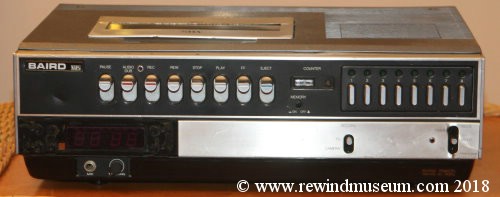
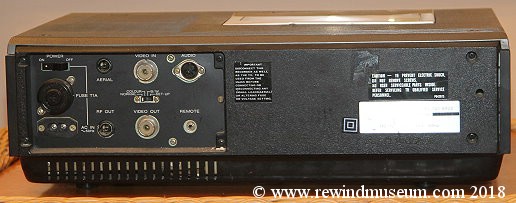
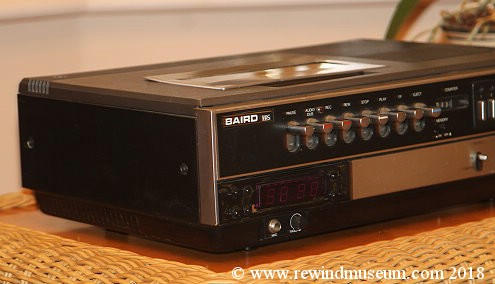
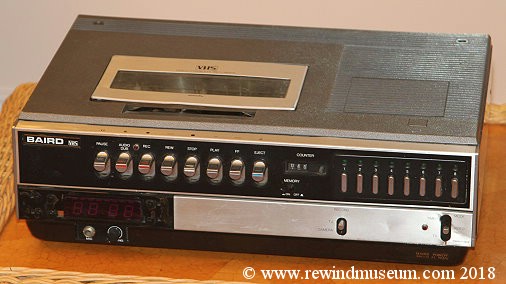
The 1st VHS VCR was introduced by JVC in 1976 (above) and was the JVC HR-3300. This is a Baird clone of the JVC HR-3300.
The unit was introduced in the UK in 1978 and was cloned by a number of manufacturers including Ferguson (see above). This
is also the VHS VCR which everyone remembers in the UK and it was available for rent or sale in large quantities. It was,
in comparison to other VHS and Betamax models at the time, a very compact unit which added to it's popularity. John Logie
Baird, in his laboratory on 2 October 1925, successfully transmitted the very first television picture and on 26 January
1926, Baird demonstrated the transmission to members of the Royal Institution and a reporter from The Times. In 1952
the Baird Television Ltd was formed and from 1953 they manufactured TV sets. In 1960 the company was acquired by
"Radio Rentals" and they changed the name to "Baird Television". In 1968 Radio Rentals were taken over by Thorn.
Thorn eventually became Thorn EMI. The Ferguson VCR above and this Baird VCR were both brand names owned by
Thorn. Hence the same model numbers. Thorn sourced these VCRs from JVC and since they also owned
Radio Rental, these VCRs were available for rent in the UK in large numbers.

The first Panasonic VHS VCR - VBT200 (1977) and - NV-8600b (1978).
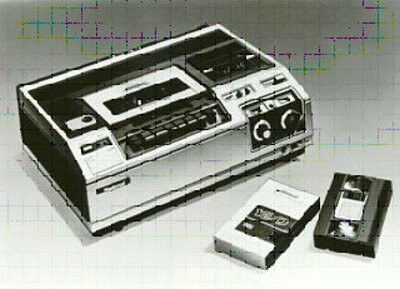
The first ever Panasonic VHS VCR was the RCA VBT200. In 1977, President Masaharu Matsushita visited RCA in the USA
and talked to their representatives. It was decided that Panasonic would supply RCA with VCRs using the VHS system.
These video cassette recorders would be built to RCA's specifications. The first ever Panasonic VCR to be introduced
into the UK was the NV-8600b in 1978 See the VBT200 above. This picture is from the Panasonic web site.
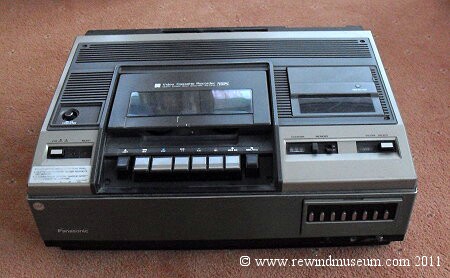
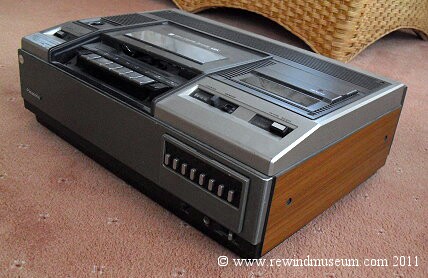
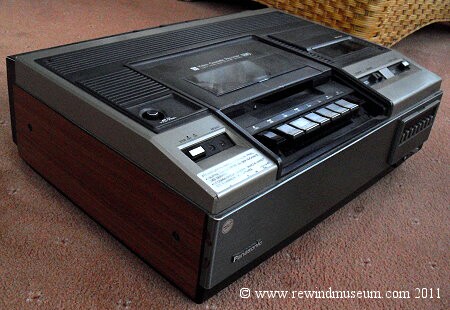
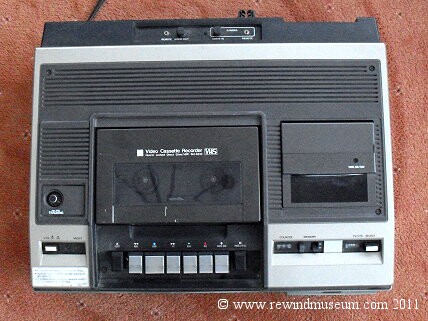
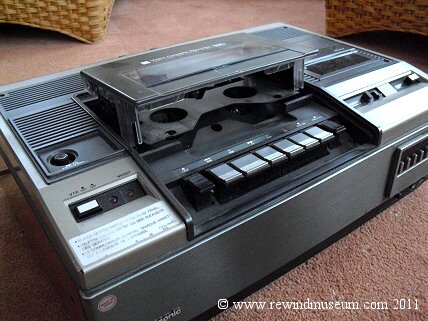
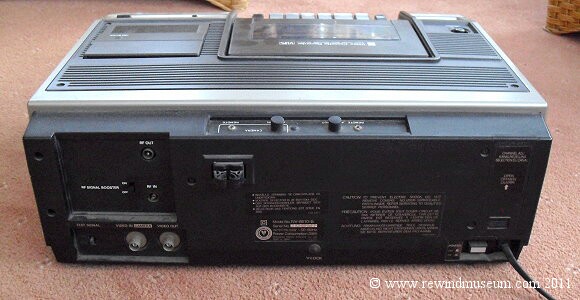
The VBT200 used a mechanical rotary tuner and the NV-8600b used a push button tuner. The NV-8610b is above. Since the
VBT200 was made for RCA, to the best of our knowledge, it was never sold under the Panasonic brand name. The first
VHS VCR with the Panasonic label was indeed the NV-8600 and the NV8600b was the British PAL version. Close comparison
of the pictures shows that apart from the rotary tuner the RCA200 and the NV-8610b are very similar.

Portable VHS VCRs with separate cameras.

1978. The first ever VHS portable recorder. The JVC HR-4100 EG
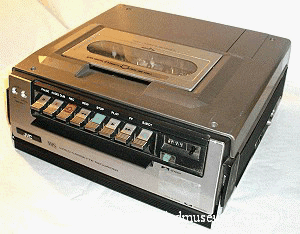
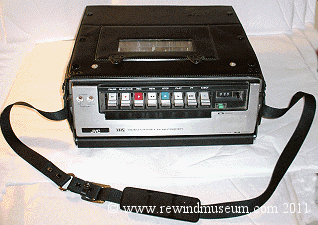
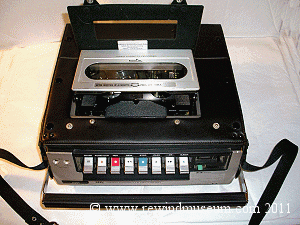
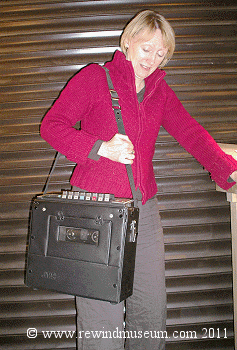
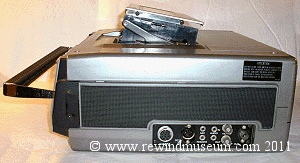
The first portable VHS video system was introduced by JVC in 1978. This was the HR-4100 and GC-3350 colour video
camera. The HR-4100 was large and weighed a massive 21lbs (9.5Kg). Indeed it is almost as if JVC simply took the
HR-3300 mains unit and chopped off the tuner. The resulting unit was considerably heavier than the colour reel
to reel portables from 1975 (3 years earlier) like the JVC
PV-4800E.
The increased weight would be largely due
to the direct mechanical cassette eject system and the "built like a tank" approach. Looking at the pictures
does not really illustrate the size and weight of this unit. Hence the inclusion of the lady above trying to
carry it. Also remember that a fairly heavy camera and cable needed to be carried as well to complete the
videographers kit. This unit was obtained recently (2006) and the VCR and leather case is in mint condition.
We are looking for a GC-3350 camera if anyone can help ....
1979. The matching tuner timer & camera power
supply. The Ferguson Videostar 3C03 and 3V01C
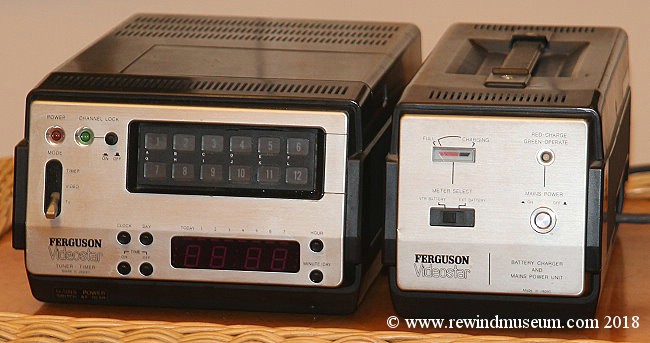
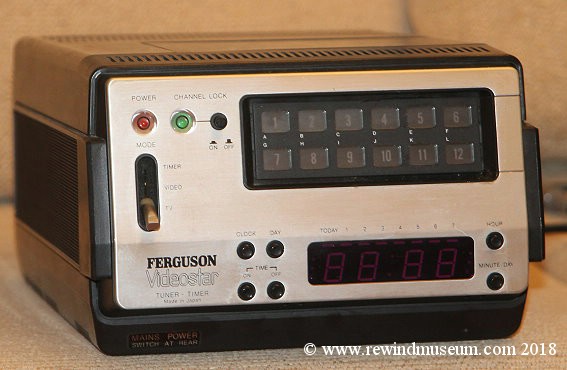
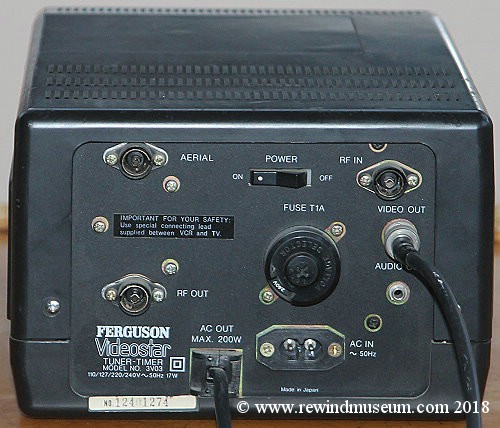
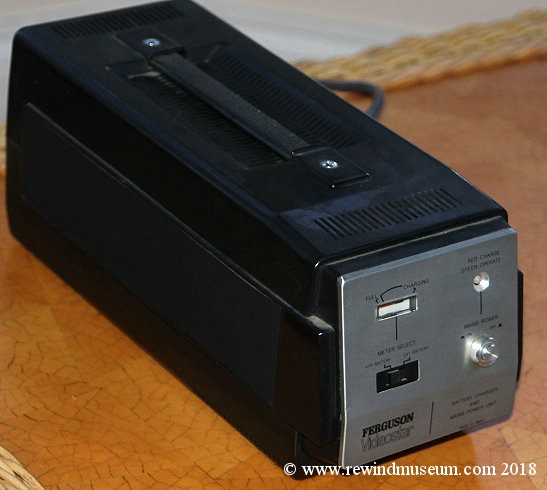
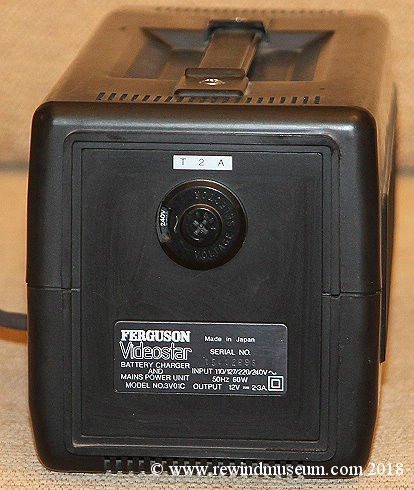
The matching JVC tuner timer would have been the TU 41EG and camera power supply AA P41EG, however, we have here the
Ferguson Clones. JVC supplied this kit to Ferguson in the UK and the Ferguson clone of the JVC HR-4100 VCR
above was the Ferguson 3V01, which apart from the badging was identical. The tuner timer and PSU were also
identical apart from the badging. It should be noted that the JVC units were available from 1978, however,
the Ferguson Videostar clones, in the UK were available from 1979. The complete kit is shown below.
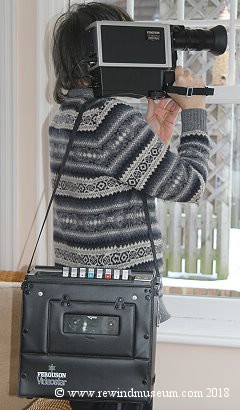
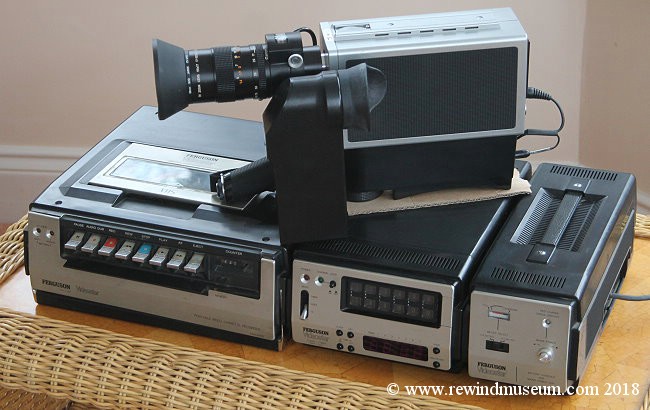
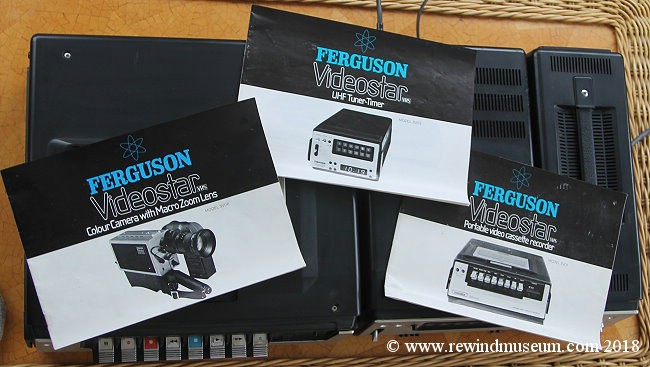
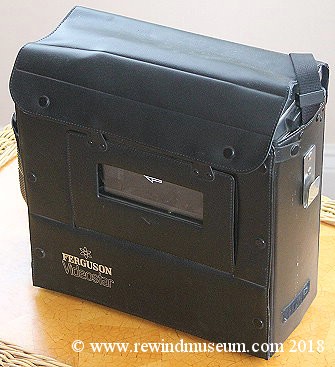

1981. JVC HR-2200 EK full size VHS portable VCR and TU-22EK tuner.
with AA-P22EG/EK camera power supply and G-71P camera.
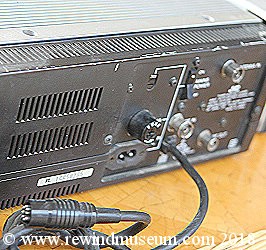
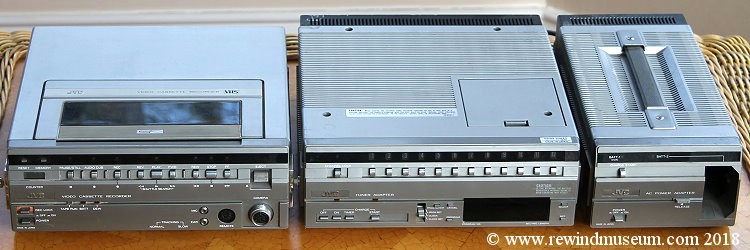
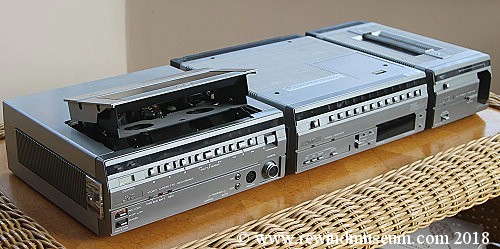
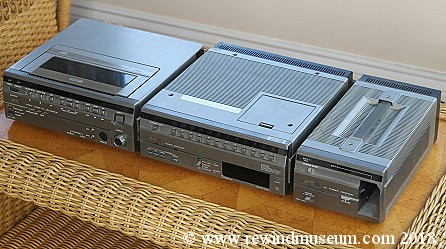
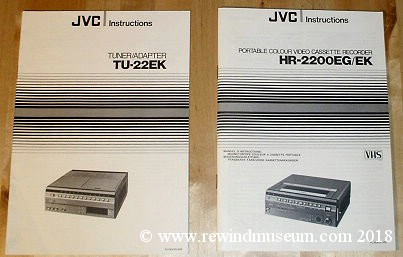
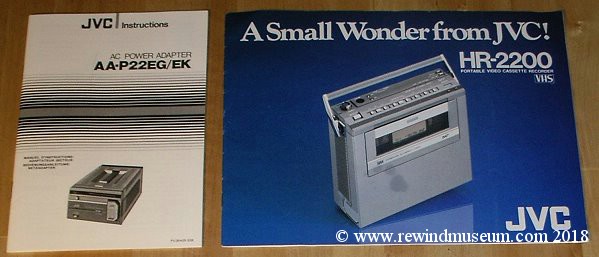

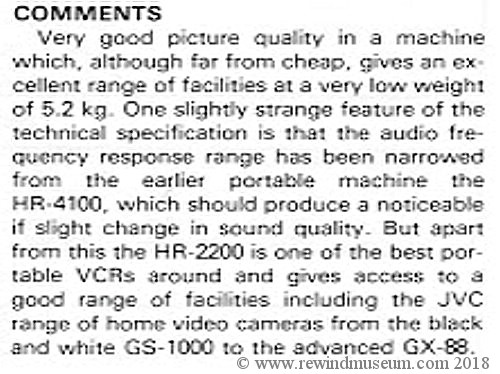
Here you can see one of the last separate full size VHS portable video kits with colour camera. By 1984 JVC had
introduced the first VHSC camcorder, the
GR-C1 and by 1985 Panasonic had introduced the first full size VHS camcorder,
the
M1. There are a number of cameras which could have been used with this kit but the one chosen by the original
owner was the
JVC G-71P colour camera. There is also part of a review above from 1981. This kit is complete with
manuals. Unlike the first portable VCR, the
HR-4100 above from 1979 weighing 9.5Kg, this VCR is more compact and
much lighter at 5.2Kg. It uses microswitches to control the mechanism. This was a massive improvement in only 2 years.

1982. The first ever VHSC portable VCR, the JVC HR-C3 & GX-78E camera
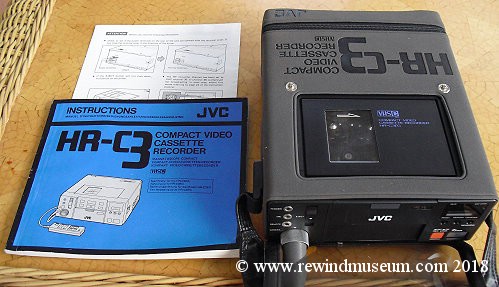
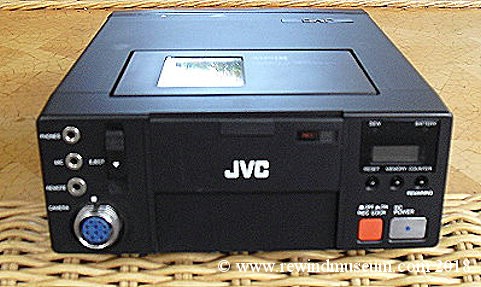
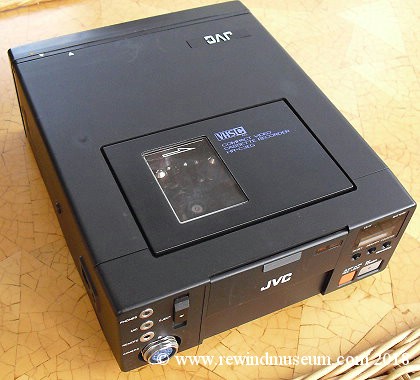
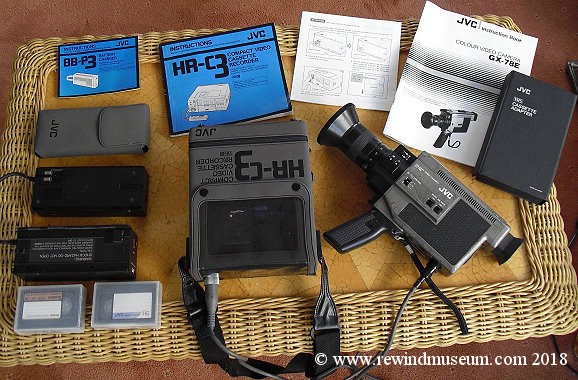

The first VHS portable above was quite heavy and that was because it used a full size VHS tape / tape mechanism.
JVC (Victor Company of Japan) invented the VHSC systems using a smaller tape in 1982. The smaller VHSC tape could
go into a VHS tape adapter and then play in a standard VHS VCR. This HR-C3 with accompanying
GX-78E camera came
with a wired remote, digital counter, headphone output, audio dub feature and mike input socket. Price new $850
From "Popular Photography" Magazine - May 1983 - "Price of the GZ-S3 camera with electronic viewfinder is $895.00,
the HR-C3 recorder with wired remote, NB-P3U battery pack, carry pouch, and shoulder pack and tape is $850"
This was the first model of portable VCR to use the VHS-C cassette. Power consumption 4.8W, weight 2Kg.
Playback only (VCP) Video Cassette Players.

1988. Alba VCP 2000 VHS playback only player.
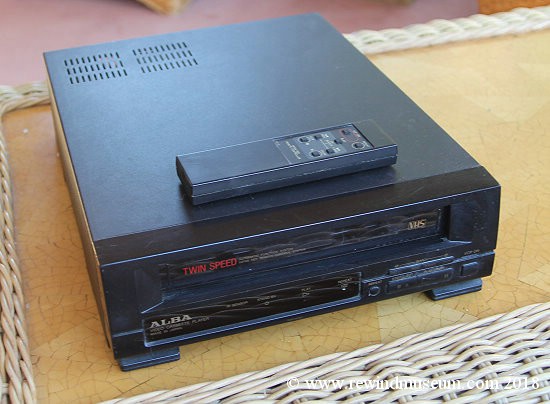
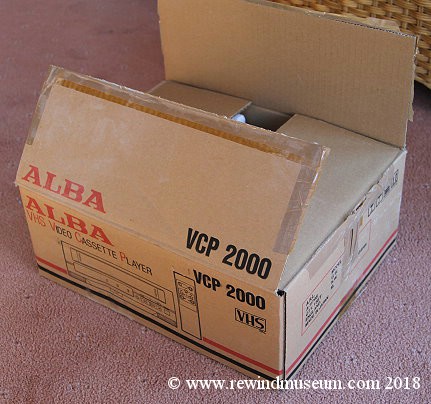
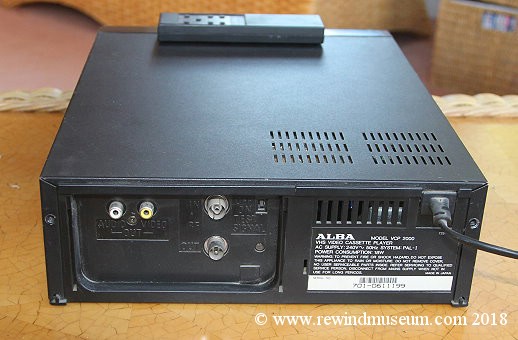
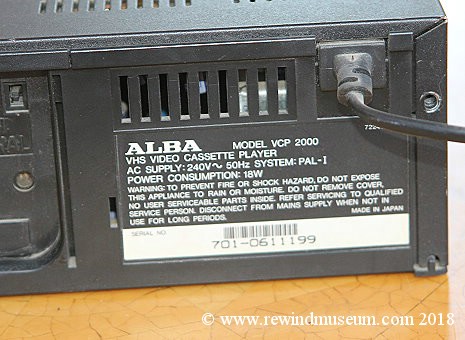
I bought this Alba VCP 2000 video player brand new and of course kept the manufacturers packaging. In those days
we had 2 young children and on our long caravan holidays in Europe we would use a 12 volt inverter and a 12 volt
Sentra TV stuffed between the front seats and play children's videos to the kids in the back seats of a 2.8L Mk2
Granada GL. This kept them happy during the long drives. These days that might not seem to be very unusual but
back in 1888 - 1994 I doubt if anyone else actually did this. A particular favourite with the kids were the old
"
Blondie" movies and of course Tom and Jerry. We had been known to drive many hundreds of miles in a day towing
the caravan and this entertainment kept them quiet! Once again we are towing the caravan and last year and later
this year (2018) once again we are carrying the kids and grandchildren (big American SUV with 8 seats). Trouble
is, children these days tend to want to watch "rubbish" on the TV but anyway it still helps to keep them quiet.


 Making a donation.
Making a donation.
The Rewind Museum is a non-profit making endeavour. The web site and the touring exhibitions are run on
a voluntary basis. Donations,
not money, just old items you no longer want, are always welcome.
If you have something that you think would be of interest, please contact us with the details.
We can send in a courier to pick them up. (Even an international courier). Thank you.
Please note - The Rewind Museum site has been archived by the British
Library so that future generations can always access the site's content.
To talk to us about making a donation please go to - "
making a donation".
Are you interested to read about a 10 year + restoration of a classic vehicle?
If so go to -
www.1952chevytruck.com
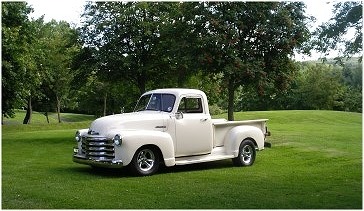 The 1952 The 1952 Chevy truck web site.
The 1952 The 1952 Chevy truck web site.

Web site copyright © 2018 Vision International. All rights reserved.
For all questions & comments about this site's content contact Dave at Rewind Museum.



























































